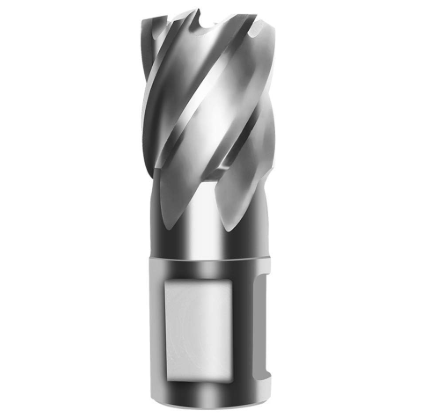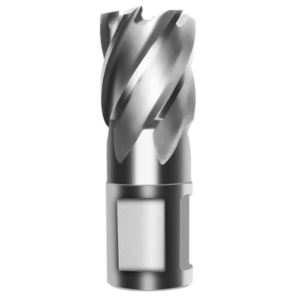Our Location
304 North Cardinal St.
Dorchester Center, MA 02124

Sharpening hollow drill bits, also known as core drill bits or annular cutters, is an important maintenance process that ensures they continue to cut effectively through materials such as concrete, stone, ceramics, and metals. When a hollow drill bit becomes dull, it results in slower drilling, higher heat generation, increased power consumption, and possible damage to both the bit and the drilling machine. Unlike traditional twist drill bits, hollow drill bits require more careful handling because they feature multiple cutting edges along their circumference and a hollow center designed to remove material efficiently. The sharpening process involves using precision grinding equipment, sharpening stones, or specialized drill bit sharpening machines, and choosing the correct method depends on the brand, the material of the bit, and the intended application. Brands such as Bosch, Hilti, Makita, DeWalt, Milwaukee, Starrett, and Fein manufacture different models of hollow drill bits, and each has recommended sharpening procedures that can prolong service life if followed correctly. This comprehensive guide provides detailed methods, tools, brand-specific considerations, and practical tips to restore sharpness to hollow drill bits when they are not sharp.
Hollow drill bits differ from solid drill bits because they cut only at the edges rather than drilling out the entire material core. This design allows them to cut faster and reduce the load on the drilling machine. However, their cutting edges gradually dull due to friction, heat, and contact with hard surfaces such as reinforced concrete or hardened steel. For example, a Bosch SDS-max Hollow Core Bit (model 2608580343) is engineered with carbide cutting teeth, but after extended use, these carbide segments lose sharpness, making drilling much harder. Similarly, Hilti DD-BI Diamond Core Bits, which are used for drilling through concrete with rebar, wear down when exposed to continuous heavy-duty applications. The dullness results in chipping of edges, reduced cutting speed, and overheating. Understanding why bits dull is important, because it influences whether the user can sharpen them or whether they need professional re-tipping and reshaping.
To sharpen hollow drill bits effectively, users need appropriate tools and machines that can grind the cutting edges at the correct angles without damaging the bit body. Professional workshops often use CNC-controlled grinding machines or diamond wheel sharpeners to restore cutting efficiency. For example, the Darex V390 Drill Bit Sharpener, although primarily designed for twist drills, can be adapted with special jigs for sharpening certain hollow drill bits. Brands like Drill Doctor also provide models such as the Drill Doctor 750X, which can restore edges of small core bits. For larger industrial-grade hollow drill bits, specialized grinding wheels such as the Norton Diamond Wheel or Makita A-95956 grinding accessories are used. Hand sharpening tools like diamond files (e.g., DMT Diamond Whetstones) can also be used for minor touch-ups of small hollow drill bits such as Milwaukee Thin Wall Core Bits (48-17-1000 series). Essential equipment includes protective gear such as safety goggles, gloves, and cooling systems (water or lubricant) to prevent overheating during sharpening.
The process of sharpening a hollow drill bit involves several key steps. First, the bit must be thoroughly cleaned of dust, debris, and residue from previous drilling operations. Brands such as Hilti and DeWalt recommend using a wire brush or compressed air to ensure the bit surface is free of contaminants. Once cleaned, the cutting edges need to be inspected under good lighting, preferably with a magnifying glass, to identify dullness, chips, or uneven wear. The next step is securing the hollow drill bit in a stable vise or jig to prevent movement during sharpening. The sharpening itself is done using either a bench grinder with a diamond wheel or a specialized core bit sharpener. The user must maintain the factory-set angle of the cutting edge, usually between 30 to 60 degrees depending on the material and the brand specifications. For example, Bosch recommends maintaining a 30-degree edge on its carbide-tipped hollow core bits, while Hilti diamond core bits require reshaping using diamond grinding tools at about a 45-degree contact angle. The sharpening should be gradual, removing small amounts of material to avoid overheating. During the grinding process, cooling the bit with water or a coolant is essential to prevent carbide tips or diamond segments from cracking. Finally, the bit must be rebalanced by ensuring all cutting edges are even, and the center pilot pin or positioning needle (if included) must be checked for alignment. Once sharpened, the bit should be tested on a sample material to confirm that it cuts smoothly without excessive vibration.
Different hollow drill bits require different sharpening techniques. Carbide-tipped hollow drill bits, such as Makita SDS-max Core Bits (D-35574 series), can be sharpened using a fine-grit diamond grinding wheel. Diamond core bits, like DeWalt DW5905 Diamond Core Bit, are more challenging, because the diamond segments are bonded and require re-tipping or laser welding if they wear out. In such cases, professional services are often necessary. For smaller hollow drill bits used in woodworking or metalworking, such as Starrett Diamond Grit Hole Saws or Milwaukee Hole Dozer Core Bits, manual sharpening using diamond files is sometimes sufficient. Each type of hollow drill bit has unique sharpening challenges. For instance, hollow drill bits used in glass or ceramics (like Bosch Glass and Tile Core Bits) require very careful light sharpening with water lubrication to prevent cracking. On the other hand, heavy-duty concrete hollow drill bits from Hilti or Fein demand more aggressive grinding to restore the carbide or diamond segments.
Sharpening recommendations vary among manufacturers. Bosch advises using only diamond grinding equipment on its carbide hollow drill bits and discourages excessive hand filing, as it may damage the edge geometry. Hilti emphasizes professional servicing for its diamond core bits, offering factory re-tipping services for models like the Hilti DD-150-U Diamond Core Bit series. Makita provides service centers where worn core bits can be reshaped and re-sharpened, especially larger SDS-max versions. Milwaukee recommends replacing rather than sharpening its smaller hole saw core bits, though it does allow light edge restoration with diamond stones. DeWalt offers long-life diamond core bits such as the DWA4250 series, which can be restored by regrinding diamond segments using professional-grade sharpening machines. Starrett, known for precision cutting tools, suggests using fine-grit sharpening stones to lightly hone their diamond grit hole saws but warns against aggressive grinding. These brand-specific instructions highlight the importance of following manufacturer guidelines to avoid reducing tool life.

Several mistakes are common when attempting to sharpen hollow drill bits. One major mistake is grinding too aggressively, which removes too much material and weakens the cutting edge. Another mistake is overheating the bit by grinding without sufficient cooling, which can damage carbide tips or weaken diamond bonds. Misaligning the sharpening angle is another issue, leading to uneven cutting and vibration. For example, sharpening a Bosch carbide hollow core bit at the wrong angle may result in premature breakage. Using inappropriate tools, such as standard bench grinders without diamond wheels, is also a mistake, since carbide and diamond tips require harder abrasives to sharpen effectively. Ignoring manufacturer guidelines, such as those provided by Hilti or DeWalt, can lead to permanent damage to expensive bits. Finally, attempting to sharpen heavily worn diamond core bits at home without professional equipment often results in wasted effort, since these bits usually require re-tipping rather than simple sharpening.
Not all dull hollow drill bits should be sharpened. If the bit is chipped, cracked, or severely worn, replacement may be the more economical and safer option. For instance, Milwaukee’s Hole Dozer Core Bits are relatively low-cost and may not justify the time and expense of sharpening. On the other hand, expensive Hilti diamond core bits used for reinforced concrete drilling often cost hundreds of dollars, making professional sharpening or re-tipping a better option than replacement. Users should consider the cost of the bit, the availability of sharpening services, and the extent of wear before deciding. In general, if the bit has minor dullness, sharpening is appropriate, but if it has lost a large portion of its cutting segment, replacement is advisable.
Proper maintenance reduces the frequency of sharpening and extends the service life of hollow drill bits. Always use appropriate drilling speed and feed rate according to the manufacturer’s recommendations. Applying adequate coolant, especially for diamond core bits, prevents overheating. Cleaning the bit after every use ensures that debris does not contribute to dulling. Storing bits in protective cases, such as those provided by Bosch or DeWalt, prevents edge damage. Rotating between multiple bits during heavy-duty projects also helps extend sharpness. For example, alternating between two Hilti DD-BI diamond core bits during continuous concrete drilling reduces heat buildup and prolongs segment life. Routine inspections using magnification help detect dullness early, allowing timely sharpening before excessive damage occurs.
Sharpening hollow drill bits when they are not sharp is a process that requires the right tools, patience, and adherence to brand-specific recommendations. The process involves cleaning, inspecting, grinding with diamond wheels, cooling properly, and testing after sharpening. Brands such as Bosch, Hilti, Makita, DeWalt, Milwaukee, and Starrett each have their guidelines for maintaining their hollow drill bits, and following these ensures maximum performance and durability. While some hollow drill bits can be sharpened at home with diamond files or grinders, others, especially diamond core bits, often require professional servicing. Ultimately, knowing how to sharpen hollow drill bits not only restores their effectiveness but also saves money and reduces downtime in construction, woodworking, and metalworking projects. By sharpening carefully and maintaining them properly, users can ensure their hollow drill bits deliver precision cutting for many years.